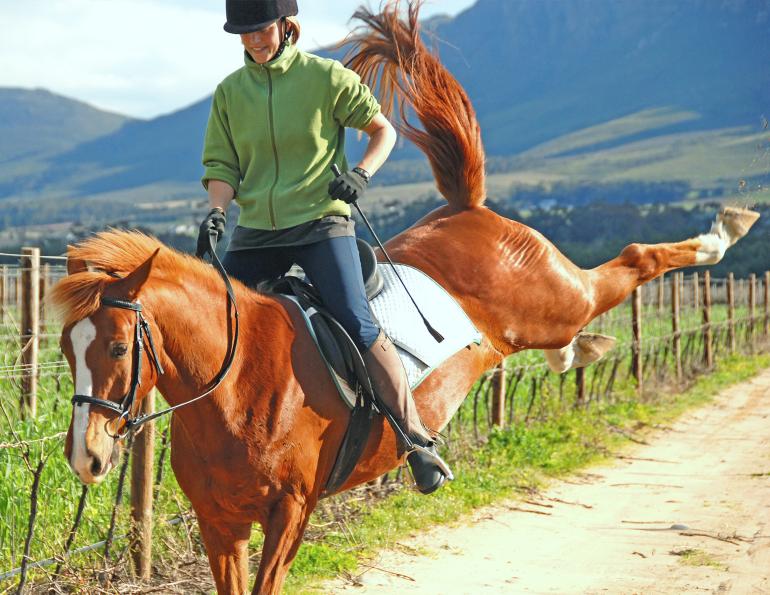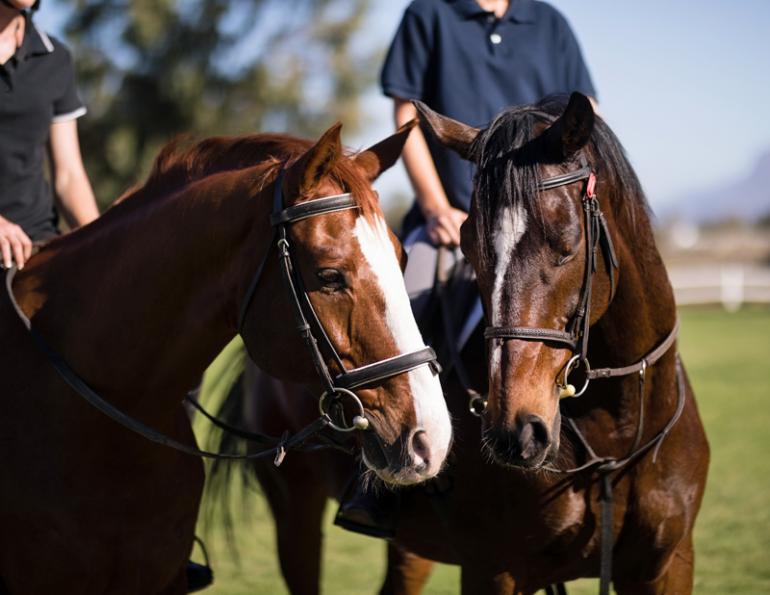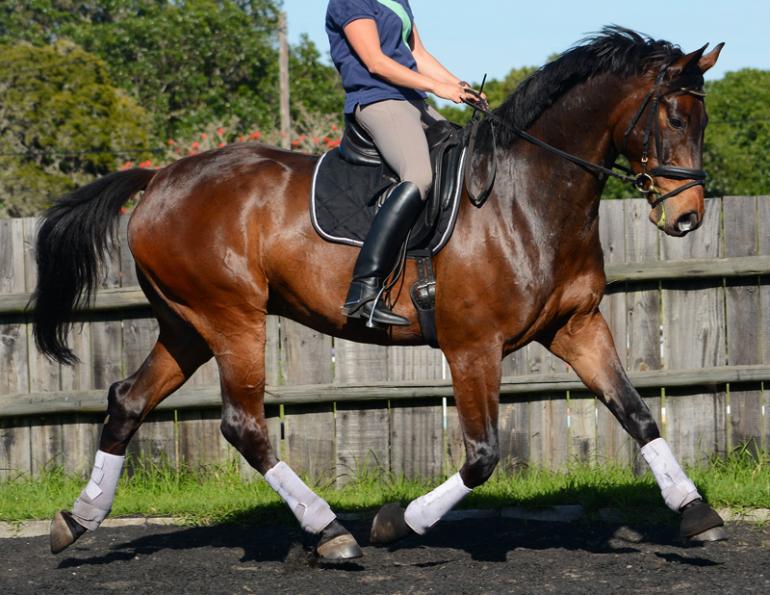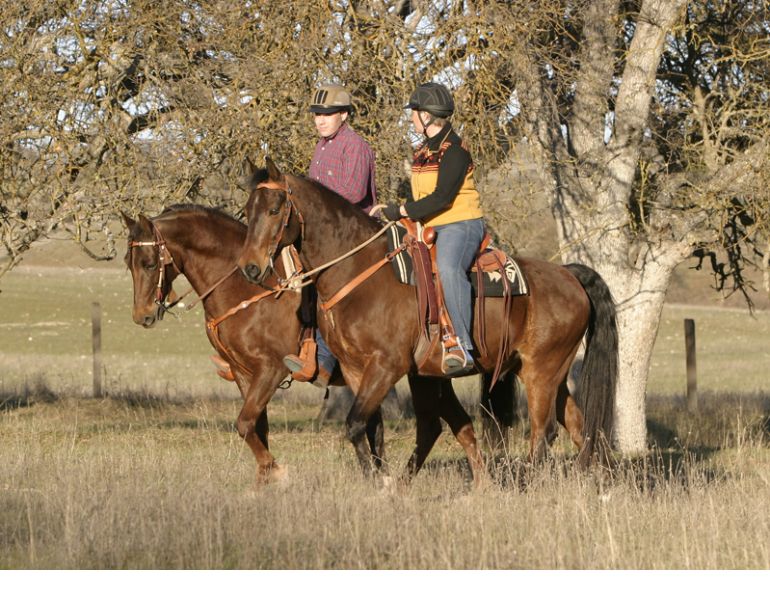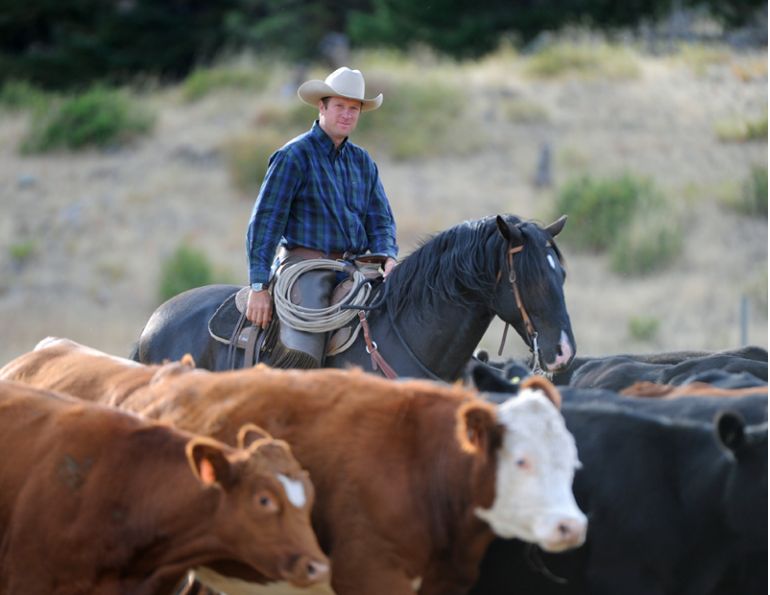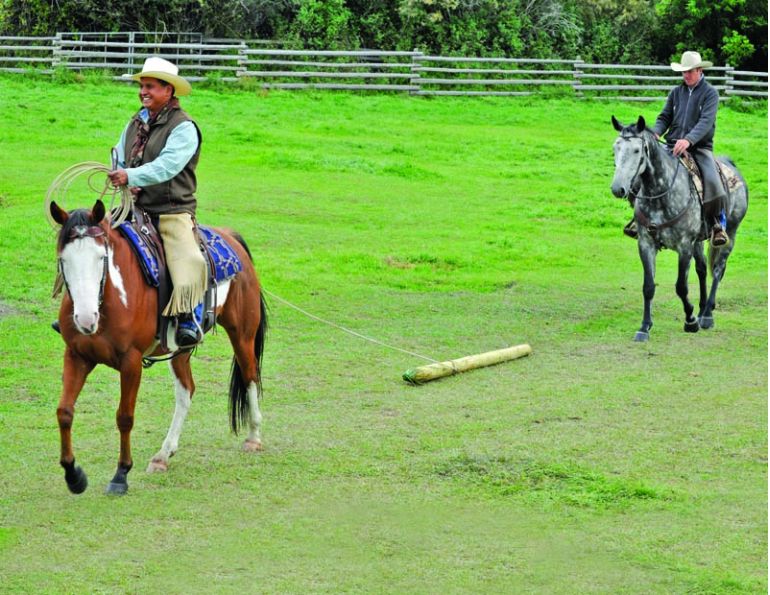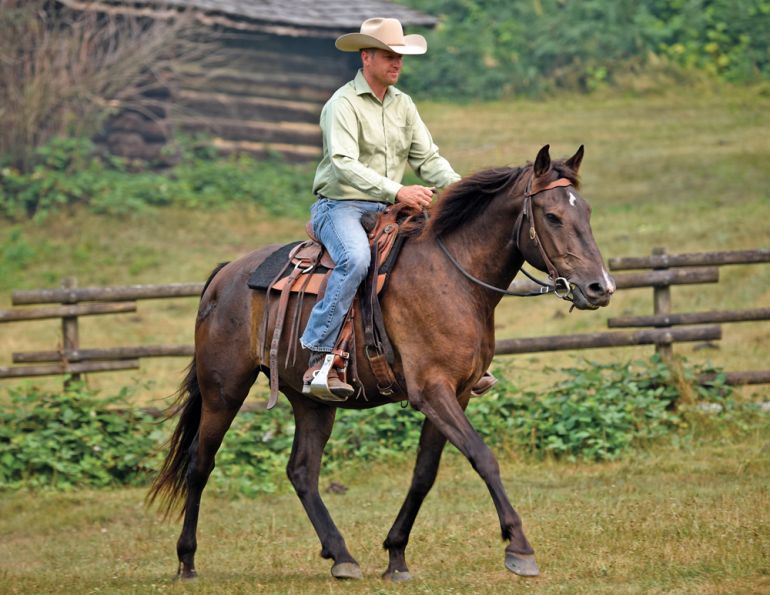By Will Clinging
Tension in horses can lead to all kinds of problems and hinder their ability to learn. Some horses are so tense and stiff that they are incapable of certain maneuvers. This can lead to frustration and anxiety, which in turn leads to increased tension.
Tension can come in many forms: physical stiffness in the body, choppy, reactive movement, or explosive behaviour.
Before dealing with any tension, I try to understand the cause. A horse’s age, maturity, confidence, fitness, and the level and quality of his training can all play a part.
Tension can also be caused by too much work, not enough warm up, poor fitting equipment, unsoundness, and pain. While I may not be able to pinpoint a specific cause, I can gain insight by taking these things under consideration.
I try to deal with any mental tension first. Removing fear, establishing authority, and sharing responsibility with the horse helps him understand what is expected of him and shows him where to look for comfort when he gets upset. When the horse knows that he has some control over his fear, and that he can look to the rider or handler to release pressure, he is much more inclined to relax. Once the horse is in a less stressed frame of mind I can reevaluate his physical tension.
Related: Hard Mouth or Hard Mind
With a green or untrained horse, I begin by evaluating cadence, headset, reactiveness, and the general state of his body while he is loose. If the horse has nice rhythmic movement at the walk and trot and he carries his head comfortably I will look to see how he bends his body. Is he over-bending, is he counter-bending, or does he bob his head?
If so, I can deal with these physical things in hand or on the lunge line. If the horse is calm but has a hard time responding comfortably or smoothly to a request for a transition, or if his speed is erratic, more time may be required to comfort him and deal with his mental tension before we can proceed to the physical tension.
Green or untrained horses can be evaluated for elements of tension while loose. Photo: Robin Duncan Photography
If I suspect that the tension is the result of past events such as a bad training experience or frustration from the rider, I deal with that situation before I look to fix things through physical mechanics.
Related: Behaviour Patterns
If the horse has built up anxiety that is only expressed in a specific situation, I will simulate that situation so I can help the horse resolve his anxiety. Often, the horse will anticipate confusion because he has experienced a lack of clarity from his handler. This escalates until the horse is working himself into an anxious knot before the handler even has a chance to ask for a movement or answer his questions.
In this situation, I backtrack to what the horse was doing before his anxiety level changed and try to find the cause. Perhaps the handler changed the way he asked for something, or increased use of a whip or other stimulus. Or a change in the environment may have distracted the horse from his work. Whatever the cause, it is impossible to proceed until the horse is in a relaxed state of mind. Only then is the horse likely to have a clearer understanding of what scared him and how he might be better able to handle it.
Some horses are so tense that they cannot find any comfort mentally or physically. These horses are often muscle bound. A short-coupled horse, very strong through the neck and with a powerful hind end, may find it very hard to bend through the body. He is basically as stiff and strong as a board, and it is not easy to bend a two-by-four!
Such a horse has amazing power, but lacks the ability to deal with that power in a relaxed manner, which can lead him to overreact. He then puts too much strength into his reactions and scares himself. This causes him to panic and he continues to build speed and anxiety until he is simply out of control.
In these situations, I work with the horse’s body as I try to help him stay calm so he doesn’t get away from himself as easily. The horse needs to learn to slow down and be comfortable; he also needs to learn that if he does get out of control, he can come back to a more comfortable situation. Trying to encourage him to bend through his body correctly is initially difficult but ultimately will help him become much more supple and relaxed. Though not easy, it’s important to allow this type of horse to get out of control and not punish him, so that he learn that he will not be hurt, and that he can recover himself. I support the horse but do not protect him from giving it too much gas. He will eventually learn to moderate his power through a combination of physical relaxation, which will allow correct mechanics, and a lower level of anxiety because he isn’t anticipating being out of control. It is not always an easy task with a horse like this, but without physical comfort he will never become relaxed, and without relaxation it will be harder to find physical comfort.
Related: Turn Pushy Horses Around with Three Simple Lessons
Related: Complicated Horses
Main Photo: iStock/Heidijpix



